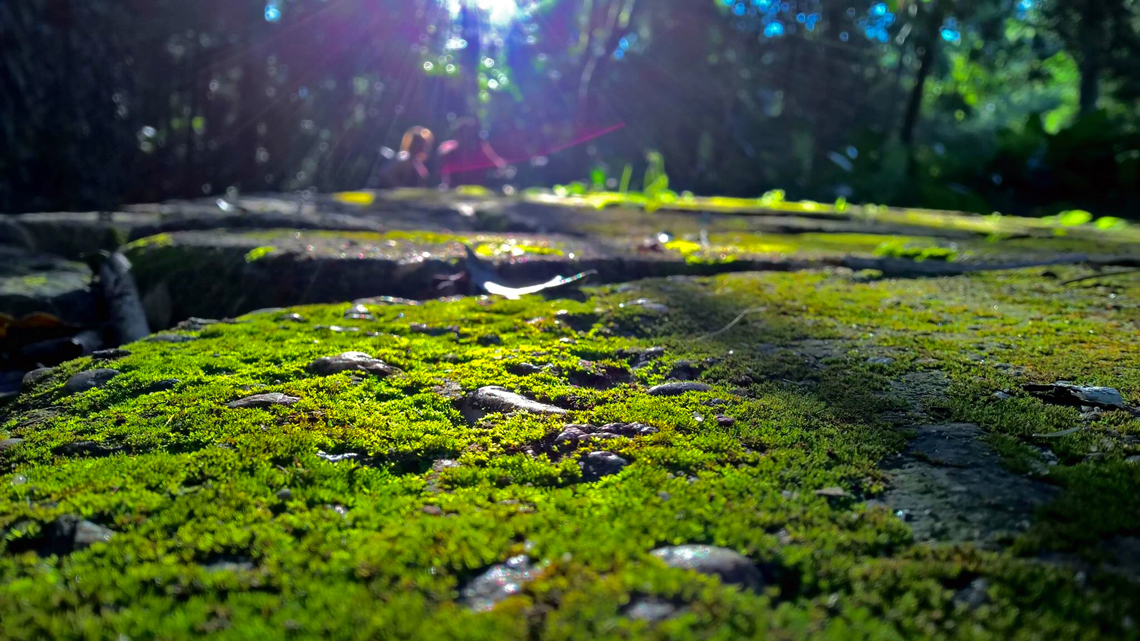Moss-covered ground annually absorbs 6.43 billion tons more carbon from the atmosphere than land environments not covered by this type of vegetation. The number, calculated by an international study published in the scientific journal Nature Geoscience in May, is equivalent to more than six years of all global carbon emissions associated to land-use changes, such as the transformation of forest swaths into agricultural or pasture areas. As with all vegetable matter, mosses capture carbon dioxide (CO2) through photosynthesis, reducing atmospheric levels of the gas, the main contributor to the greenhouse effect, which causes global warming.
The study, which involved researchers based in Brazil, also calculated the area of the planet occupied by moss: 9.4 million square kilometers (km2), almost the same land area as China. This figure was projected after moss sampling from 123 ecosystems across all continents.
Unlike vascular plants (trees, bushes, herbs, and ferns), mosses are a type of vegetable from the bryophyta group, which do not synthesise lignine in their cell walls, and for this reason they do not have woody, rigid parts. Moss was one of the first plants to prevail in the land environment almost 500 million years ago and is particularly important in places where vascular plants do not survive, carpeting forest floors and fields and growing on tree trunks and rocks. There are currently at least 12,000 species of moss, spread across all the world’s continents.
The study involved 50 scientists from around the globe, who submitted moss samples from tropical climates such as the Australian outback, and icy zones such as Antarctica. Analyses were conducted on specimens from forested areas, meadows, and pastures in natural and urban environments. Brazil contributed with moss samples from the Cerrado (wooded savannah) region only.
Data produced by the study reinforces the importance of preserving moss-covered areas, still yet to be investigated in depth. “Within the global climate change scenario, there is a need to incentivize studies into this group of plants, which are very sensitive to changes in their habitat,” says botanist Alberto Teixido of the Complutense University of Madrid, one of the article’s authors. Spanish by birth, Teixido lived for eight years in Brazil until July last year, in which period he undertook postdoctoral work at the Federal University of Minas Gerais (UFMG), subsequently becoming a visiting professor at the Federal University of Mato Grosso (UFMT). Another author of the study with links to Brazil is Colombian biologist Gabriel Peñaloza-Bojacá, who did his PhD at UFMG.
The concept of the study was to analyse moss-covered ground and compare it with regions without this type of coverage. In total, the researchers identified 24 different ways in which mosses contribute to the soil and other plants. This type of vegetation, for example, influences the microclimate of ecosystems and helps to control humidity and temperature. In addition to reducing the contribution to global warming, carbon absorbed by moss aids the growth of neighboring plants. Mossy soils have a higher concentration of nutrients such as nitrogen, phosphorus, and magnesium, and a higher level of enzyme activity.
These benefits come about because mosses, particularly those of the Sphagnum genus, are able to create a humid ecosystem with organic material housing a wide range of microbes, fungi, and invertebrates. All of this gives rise to better and faster nutrient circulation and organic material decomposition. Moss-covered ground, when compared to surfaces without it, enjoys less erosion and fewer pathogens responsible for causing diseases in plants.
According to Teixido, there is a lack of consolidated data on the importance of moss in Brazilian ecosystems. “We need more experts to describe and identify the physiology and ecology of mosses across different ecosystems, such as Amazonia,” he comments. According to the Flora e Funga do Brasil project, coordinated by the Rio de Janeiro Botanical Gardens, there are 896 moss species in the country, many of which occur in Atlantic Forest areas.
Although acknowledging that the estimate of moss-covered areas globally is impressive, botanist Denilson Fernandes Peralta, of the São Paulo State Institute for Environmental Studies (IPA), points out certain limitations in the new study. “Moss specimens from important Brazilian biomes such as the Atlantic Forest, Amazonia, and Caatinga (semiarid scrublands), South American Patagonia, and northern hemisphere tundra were not included in the research,” says Peralta, a specialist in seedless plants, flowers, and fruits that reproduce using spores, such as bryophytes. “This means that the data may be underestimated and may need further revisions.” Even so, according to Peralta, the survey presented in the article is one of the most significant on environmental dissemination and services provided by mosses.
Scientific article
ELDRIDGE, D. J. et al. The global contribution of soil mosses to ecosystem services. Nature Geosciences. vol. 16. may 2023.
